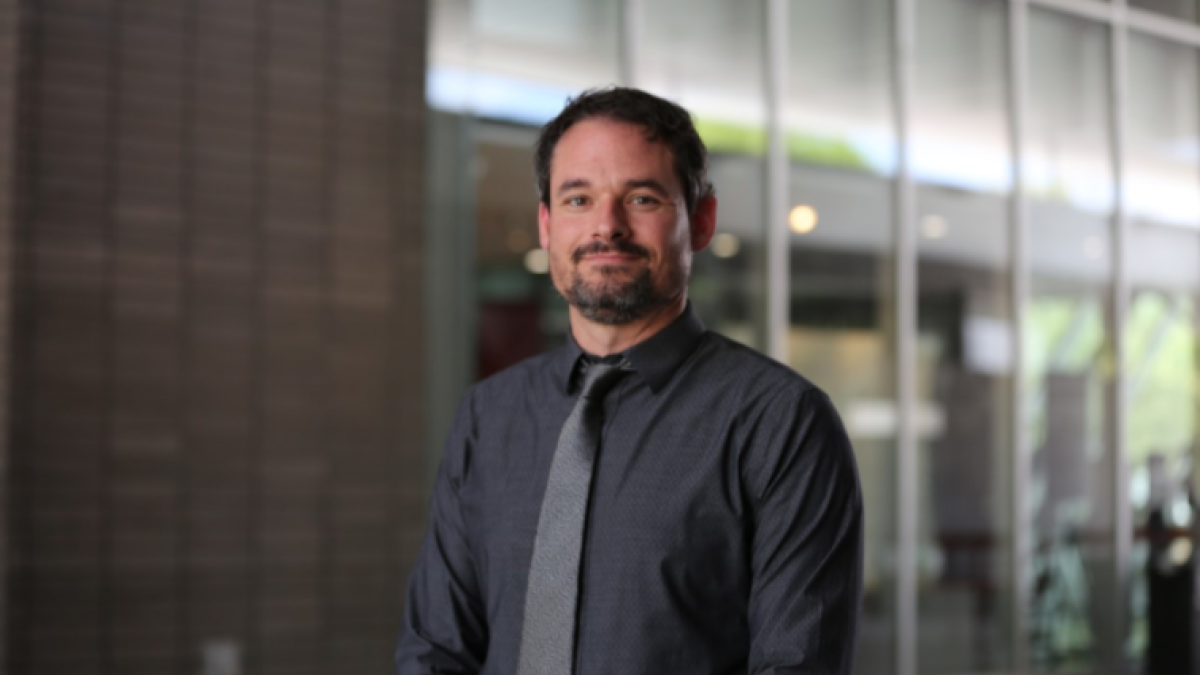Religious studies alumnus wins Best First Book prize

Alumnus Konden Smith.
Konden Smith, who graduated from Arizona State University's School of Historical, Philosophical and Religious Studies in 2012 with a PhD in religious studies with an emphasis in American religion, is the winner of the Best First Book award, which is offered once every two years at the Mormon History Association conference.
His book, “Frontier Religion: Mormons and America, 1857 to 1907,” is a dramatic revision and redrawing of his PhD dissertation and the research he completed at ASU. Under the direction of religious studies Associate Professor Moses Moore, who also worked with Smith for his MA thesis, Smith was challenged to understand and listen to the many voices in the stories he was looking at.
“Dr. Moore taught me how to think about American religious history, but more importantly the ideological and religious workings behind that history,” Smith said. “I was not just learning how to make sense of the complicated narrative of the past, but to think more deeply about the construction of that narrative and how these constructs played into the overall American story.”
Winning the First Book Award came full circle for Smith as he remembers seeing a “Best Book” award hanging on the office wall of his first mentor in American religion and Mormon studies at Northern Arizona University, Valeen T. Avery.
“'Frontier Religion' is in part dedicated to her, and I feel grateful for that connection and wish I could tell her,” Smith said.
Smith grew up in both Orem, Utah, and Glendale, Arizona, and wanted to make sense of the world around him. He didn’t come from an academic background and felt out of place at a university at first, but he was determined to find his place.
“Learning how societies formed themselves around religion, how religious communities shifted and evolved over time, and how major national and even global debates of race, gender, sexuality and secularism have taken shape has been fascinating to me,” Smith said. “Studying history has constantly humbled my presumptions about the world and how people interact with it, and it gave me a better perspective at just how small my own world is. I was excited to be accepted into ASU’s religious studies program and have been challenged and inspired by many students and teachers.”
He learned to not only learn about religion, but to engage and contribute with the studies as well. One issue that sparked his interest while he was studying was how different understood religious history was between American religious historians, secular historians and Mormon historians, and the disconnection among each group.
“Since monographs normally deal with a single incident, person or event, the concerns of most studies are limited,” Smith said. “With this narrow framework the field normally works within, it was hard to piece together this larger disconnect between disciplines. It was this initial frustration to this academic disconnect that inspired my initial research.”
The further he went along, the more convinced he was he had to look at more than just monographs. He was determined to connect the different threads to see larger patterns in the history.
“Konden proved to have an intellectual curiosity, discipline and courage that quickly made him one of my favorite students,” Moore said. “These traits also allowed him to rapidly move beyond any residual provincialism and critically situate his Mormon heritage within the broader narrative of American religious history. It is this historiographical development that is reflected in both his dissertation and his impressive book.”
Smith’s book looks at four points of conflict and transformation between Mormons and Protestants between 1857 to 1907. He emphasizes the role of the frontier ideal in these dynamics and the idea of the frontier in the American mind, which turned out to be much more important than he had anticipated as it functioned like a larger meta-religion for each of the religious groups.
“This ‘frontier religion,’ with its own rituals, sacred texts and mythology, informed how each understood and interpreted their own religions and their role in the development of the country,” Smith said. “By looking West, Americans saw a fulfillment of what they were reading in Scripture, each seeing themselves as uniquely qualified to prepare the earth for Christ’s millennial rule.”
He explores four encounters between Mormons and Protestants in his book: the Utah War (1857–1858), the anti-polygamy crusades (1880s), the Chicago World’s Fair (1893) and the Reed Smoot Senate hearings (1904–1907). Through these events he focuses on how basic understandings of “religion,” “church/state separation” and “American” changed and evolved over time and how Mormonism found acceptance by way of conforming to these shifts.
“This move by Mormons to become a private denominational church is not just a story about Mormon assimilation, but instead, ‘Frontier Religion’ represents a larger study of religion and its dynamic power in 19th-century America, together with the significance of this shift toward American secularization at the turn of the century,” Smith said.
While Smith worked toward his PhD and researching the topics that would become the focus of his book, he taught at Northern Arizona University as a full-time instructor. After graduating, he joined the religious studies department at the University of Arizona specializing in American religion, teaching courses in Mormonism, world religions, film and religion, religious violence, and terrorism, as well as religion and popular culture.
“Konden is exemplary of the broadly trained religious studies scholar that this program was designed to produce,” Moore said. “This academic background has allowed him to move far beyond the provincialism of his early studies and mature into an exceptionally gifted and broadly engaging intellectual, scholar and teacher. Needless to add, I am immensely proud of and pleased at his accomplishments thus far and look forward to his continued development and success.”
Smith continues to do independent research, which he attributes as an important source of inspiration for his classes. He teaches in-person classes, but also online as part of the UArizona online campus, where he initiated a religious studies minor.
He will have a second book coming out in 2021 and is continuing research on "frontier religion" between the 1940s and the 1960s.
More Arts, humanities and education

ASU+GSV Summit tackles big questions about AI, technology, education
Editor's note: We'll be updating this story daily throughout the summit. The annual ASU+GSV Summit kicked off in San Diego on…

Sanford School Dean’s Medalist passionate about serving families, community
Editor’s note: This story is part of a series of profiles of notable spring 2024 graduates. Helping families and children…

Sociology student passionate about preventing domestic and gender-based violence
Editor’s note: This story is part of a series of profiles of notable spring 2024 graduates. With so many diverse career options…